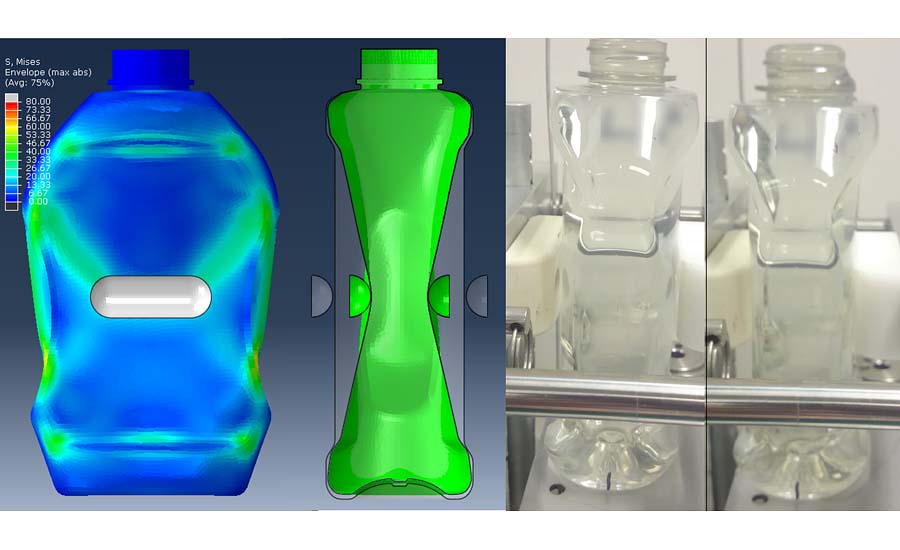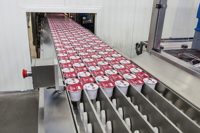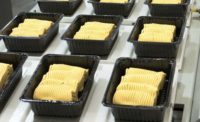Study shows optimal cross section, thickness distribution can maximize top/squeeze load performance
This study showed that most of the containers in the same-size range (with widely-differing geometry) have similar weights, barring a few outliers.

Many food items are packaged in oval-shaped containers that dispense contents by being squeezed. However, some of these containers can result in dispensing frustration and shelf-presence issues. According to a study by Plastic Technologies, Inc. (PTI), Holland, Ohio, computer simulation to optimize performance criteria can provide solutions.
Non-optimal stacking, coupled with excessively thin container corners, can create dents. Frequently, this is enough to deter the consumer from purchasing. Typically, a wide-label panel area is preferred for boldly displaying the product’s brand identity and its numerous marketing attributes, but it does not necessarily result in optimum dispensing or ergonomics. In reality, a wide, flat-paneled container is frequently the most challenging to blow mold, needing specialized equipment and being most prone to denting and buckling.
To help understand which attributes make containers easier or harder to dispense, PTI tracked the force needed to dispense, along with the amount dispensed per millimeter of indentation, for a variety of 20- to 25-ounce containers in different product categories. To make the comparisons fair, the study also analyzed same-size containers in a similar market segment.
This study showed that most of the containers in the same-size range (with widely-differing geometry) have similar weights, barring a few outliers. However, there is significant interplay between container grip region geometry, thickness distribution and squeeze performance. There likely exists an optimal cross section and thickness distribution for each geometry envelope that can maximize the performance of both top load and squeeze load.
Further, there is the possibility of lightweighting the container by changing shoulder angle, container aspect ratio and grip geometry. This is evident in higher top load strength found in larger-volume long neck containers.
The study concluded that computer simulations can be used to optimize performance criteria. Further, the virtual space offers significant potential to identify other critical parameters that drive consumer satisfaction such as ergonomics, easy pouring and bottle stability.
Looking for a reprint of this article?
From high-res PDFs to custom plaques, order your copy today!







